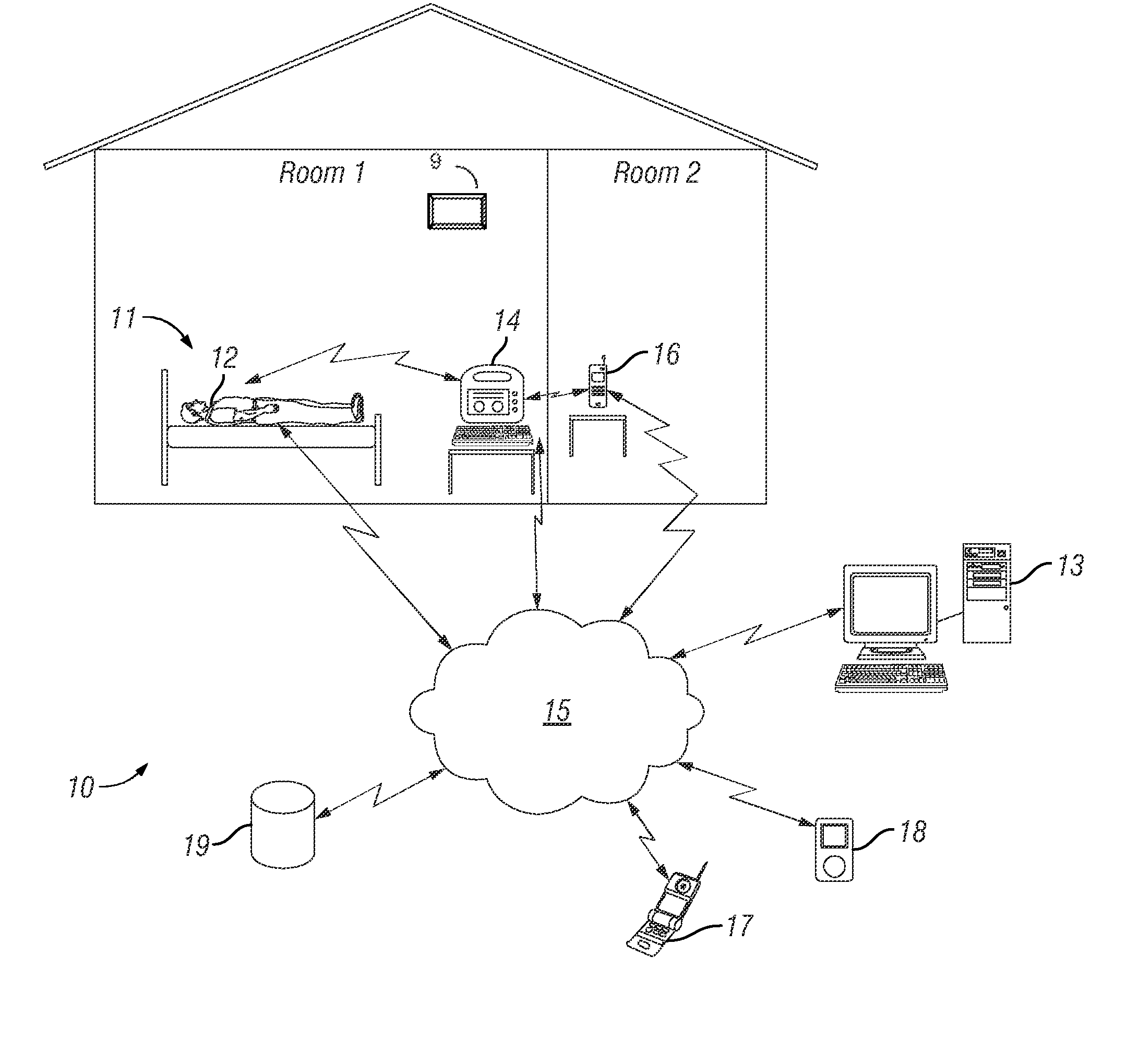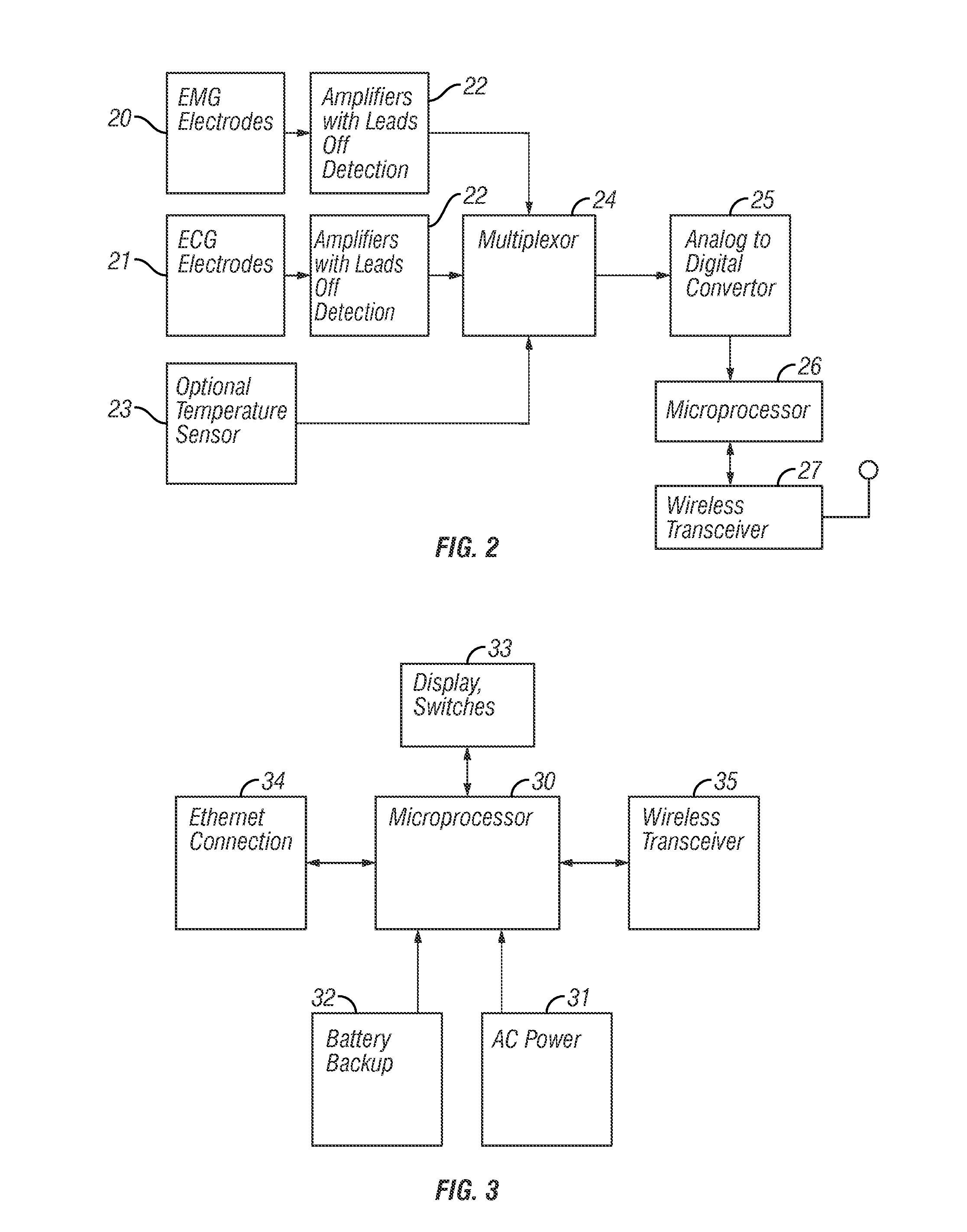Method and apparatus for detecting seizures
a seizure and seizure technology, applied in the field of seizure detection methods and apparatuses, can solve the problems of multiple seizure electrodes, requiring technical expertise, and affecting the detection effect, and may cause another seizure, and may be fatal
- Summary
- Abstract
- Description
- Claims
- Application Information
AI Technical Summary
Benefits of technology
Problems solved by technology
Method used
Image
Examples
example 1
[0134]In one example, data for an individual, i.e., patient A, was recorded. Data from that recording may be accessed remotely or may be accessed through a user interface configured on a base station. For example, as shown in FIG. 11, the base station software enables a user to access and review information. As shown in FIG. 11, the interface may allow a user to select the patient's records, e.g., first ˜8 million from the EMG file 075950, for display. The records may be selected and displayed, as shown in FIG. 12. In this particular example, electrodes were connected to a patient during a period where the patient was particularly prone to experiencing a seizure. For the recording illustrated in FIG. 12, a 10-minute training period was started 2 minutes into the monitoring session. In FIG. 12, a first vertical line 102 to the right of the Y-axis has been drawn at approximately 12 minutes to denote the end of a training period. FIG. 13 shows the log periodogram of the training region...
example 2
[0139]In this Example 2, a total of 12 patients were each monitored for a period of about 4.4 days. Monitoring included using surface EMG electrodes and processing of data using the T-squared algorithm as described herein. The patients included 5 females and 7 male subjects, all of whom were mobile individuals. Of course, patients who are physically unable to walk may also be monitored. That is, in general, the discrimination between non-seizure motor manifestations and seizure activity for patients who are capable of movement and engaged in daily activities may be most challenging. In this study, the monitoring period included an overnight stay in a supervised setting. In addition to a portion of time where the patients were typically sleeping the monitoring period included a period of time where the patients were free to execute any of various common daily activities. For example, the patients were free to move (walk around), brush their teeth, comb their hair, watch TV or engage ...
example 3
[0142]In this Example 3, each of three patients was evaluated for seizure activity. Each of the patients was mobile and during the monitoring period of about 30 hours each was free to engage in common daily activities. Prior to the monitoring period, the patients were instructed to execute at least two maximum voluntary contractions. It should be noted that a fit patient may execute a plurality of maximum voluntary contractions, resting between executions, with little decline in muscle activity. For other patients, a smaller number of MVC executions may be performed before the patient becomes tired. Thus, the number of MVC executions that are conveniently executed in one reference period may be patient specific. While executing a MVC, EMG activity was collected and a T-squared value determined. For a first patient, mean T-squared values while executing two separate MVCs were about 742 and 809. For the first patient, one seizure was measured during the monitoring period. That seizure...
PUM
 Login to View More
Login to View More Abstract
Description
Claims
Application Information
 Login to View More
Login to View More - R&D
- Intellectual Property
- Life Sciences
- Materials
- Tech Scout
- Unparalleled Data Quality
- Higher Quality Content
- 60% Fewer Hallucinations
Browse by: Latest US Patents, China's latest patents, Technical Efficacy Thesaurus, Application Domain, Technology Topic, Popular Technical Reports.
© 2025 PatSnap. All rights reserved.Legal|Privacy policy|Modern Slavery Act Transparency Statement|Sitemap|About US| Contact US: help@patsnap.com



